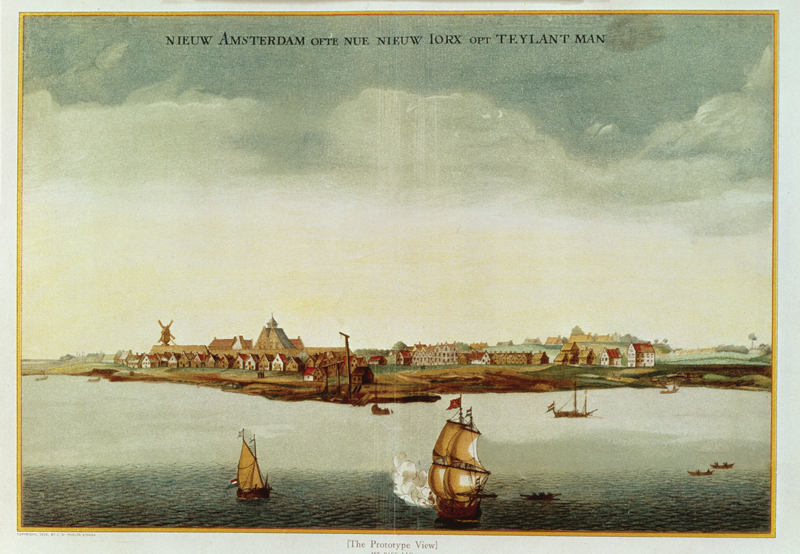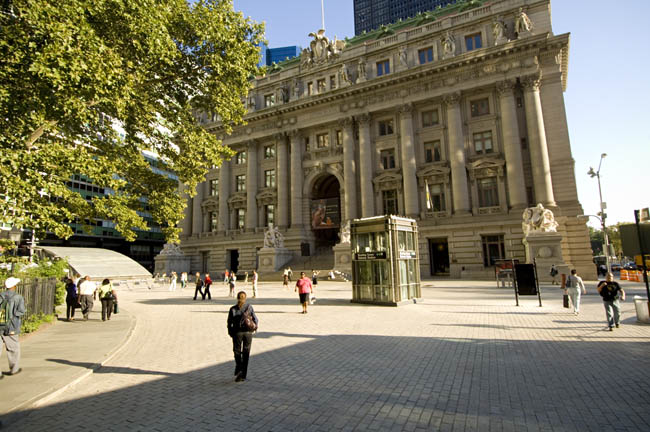Fort Amsterdam was designed to be a state-of-the-art diamond-shaped fort, built of stone and bristling with cannon. The designer warned against building it in haste. However, in 1625, the town was in desperate need of houses, so a much simpler fort was planned. It would be roughly a square of four simple brick walls, mounded over with dirt.
To build the fort, Peter Minuit needed laborers, and in 1626 he got just what he needed. The Dutch West India Company sent the first African “bondsmen” to New Amsterdam. Some of their names described their origins: Antony Congo, Paulo d’Angola, Pieter San Tomé, Anthony the Portuguese, Jan Fort Orange. Many of the men had been captured from Spanish or Portuguese ships. They were experienced seamen who already understood some European languages, religions, and laws.
For 10 years the men worked to build the fort. They dug up tree stumps, hauled dirt, mounded it up over the fort walls, and battered it down firmly. Finally, the Africans covered the earthen walls of the fort with sod. But as soon as it was finished, the fort began to crumble. The settlers didn’t usually fence their animals, so goats, sheep, and cattle strayed onto the weedy slopes to graze. Pigs went there to dig or rout in the dirt walls. In the words of one settler, the fort soon looked “like a molehill or a tottering wall.” But the Africans were busy elsewhere. They had to dig ditches, clear land, plant and harvest crops, build houses, roads, and bridges, and load the Company’s ships with thousands of pelts of beaver, mink, otter, and wildcat.

